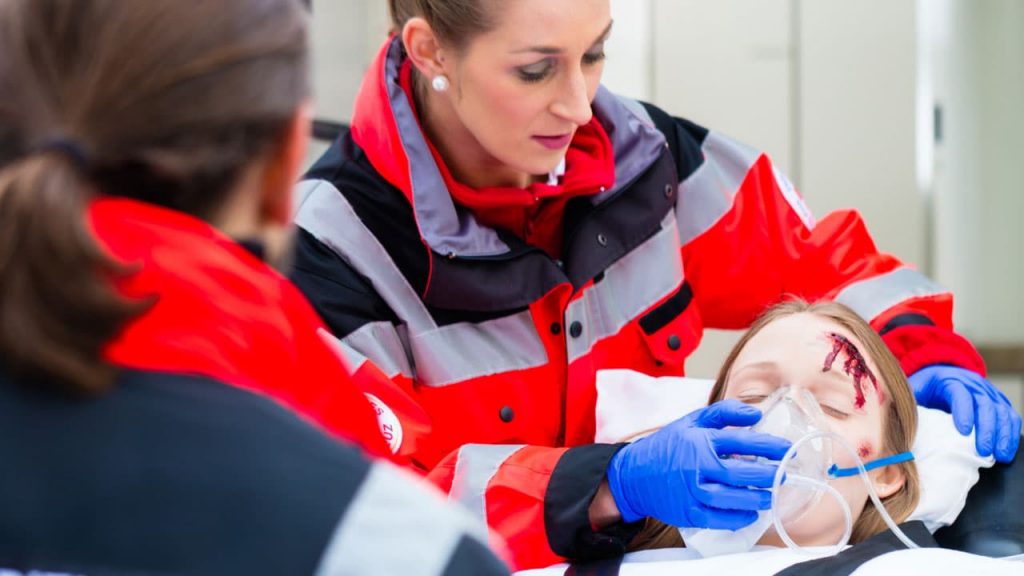There are always some risks involved when you are required to move a person during an emergency. As a first aid responder to an accident scene, you need to assess these before moving a patient. Additionally, you may have to take certain measures to assure that a wound or fracture is not aggravated.
*Keep in mind that the skills set forth in this piece are toward professional responders and medical responders who are trained in advanced techniques in our training and are not meant for the lay rescuer. The purpose of this blog is to enhance the knowledge of the reader. We highly encourage you to take our professional responder courses to learn these skills and practice them during training.
When are You Required to Move a Person in an Emergency?
Often, the scene of an accident is unsafe for you to apply first aid to the injured individual, and therefore moving the person becomes necessary. Another scenario is that changing conditions at the scene could start to make it unsafe, and you may need to move the patient.
If the scene is safe for you to assist the injured individual or if EMS/Fire will be at the scene shortly, do not engage in moving the injured individual.
Sometimes, there may be a person with minor injuries blocking the way to a patient with life-threatening injuries requiring that you move them before you can access the other person.
If you cannot apply treatment in a medical emergency because of where the patient is, you will also need to move them. One good example is if you must apply CPR to the patient. This requires the patient to be on a firm and flat surface with ample space for you to treat them and apply compressions.
All patients placed in the rapid transport category (discussed in Professional responder training) also need to be moved quickly.

Factors to Consider Before Moving a Patient
The patient’s condition and the dangers at the scene should be considered before deciding to move them. However, the patient’s size, injuries, and your physical ability also need to be considered, and you may require assistance before you can move them.
Once you are certain that you can move the patient, always take the shortest route to safety avoid hazards. Try to always walk forward with short, careful steps.
Body Mechanics and Avoiding Injuries
One of the biggest responsibilities you have as a medical first aid responder is to reduce the risk of further injuries to the patient and yourself. Any further injuries at an accident scene make the situation more complicated.
Body mechanics principles reduce these risks and include the following guidelines:
- When lifting heavy objects, do NOT use your back muscles. The muscles of the abdomen, legs, hips, and buttocks should be engaged to help.
- Reduce the distance and height between you and the person you need to lift, doing it in stages if necessary.
- Your body must be kept in a straight line as you lift so that you can reduce twisting forces.
- The more responders who help the better, and the person at the patient’s head directs the rest of the team.

Inquire about CPR Training
Do you have questions regarding CPR training? Contact us today! Our customer service representatives are ready to assist you.
Moves Used by Responders
There are various moves that you can use to move a injured person to safety. The objective is to do so without injuring the person or yourself. Some moves can be performed by one responder, and others require two. These moves can be done without the help of equipment, which is often not immediately available at an accident scene. The following has been recommended by the Canadian Red Cross Professional Responder guidelines.
Walking Assist
The walking assist is used on a responsive person who requires assistance with walking. While moving a patient with the walking assist method, the person can be supported by one or two responders who help the patient from the standing position. The patient places one arm across your shoulders and you support them with your hand around their waist.

Two-person Seat Carry
The two-person seat carry is performed on a responsive person unable to walk. Each responder stands on either side of the patient and with locked arms under the patient’s thighs and across their back, you lift the patient in the seat formed.
Clothes Drag
If you suspect a person has a head or spinal injury and they need to be moved, then the clothes drag acts as a basic SMR during the move. It can be used on a responsive or unresponsive person. A person’s clothing is used in combination with your hands to keep their head, neck, and back straight as you move a person to safety.
Blanket Drag
The blanket drag can be used in the absence of a stretcher in order to move a person who is responsive or unresponsive and works on a smooth surface. You are required to roll the patient to the side twice to get the blanket under them. Once the blanket is under the patient, wrap it around them, and pull the blanket at the head.
Extremity Lift (Fore-and-aft Lift)
The extremity lift can only be performed with a partner, and only if there are no suspected injuries to the head, spine, pelvis, arms, or legs. The move can be used to carry unresponsive patients but requires physical strength, and responders need to be careful if the patient is larger than them.
The patient is moved from the seated position, and the one responder is at the head, while the other is at the feet. The responder at the head lifts the patient from the underarms, while the second responder lifts by supporting the patient from under their knees.
Why Should You Register for Professional Responder Training?
Professional responder training is a comprehensive 40-80 hours of intense training which covers many topics ranging from musculoskeletal injuries to multiple-casualty incidents. These courses are part of our advanced training program which is designed for those who are in or wish to be in a first responder position.

We view first responders as the heroes of their communities, which is why we provide high quality training taught by experienced Canadian Red Cross instructors. Join us for our next Professional Responder training and gain the confidence you need to provide amazing life saving skills to those in need. If you have any questions regarding Professional Responder training, please contact us via email or by our toll free number.


Register for an Emergency First Aid Course!
Learn how to perform essential first aid skills, like cardiopulmonary resuscitation and injury management. Keep your friends and family safe and enroll today!




















No comment yet, add your voice below!